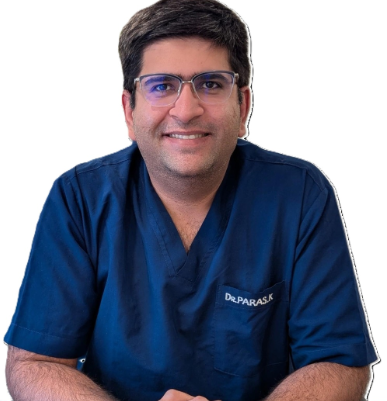List of Best Cataract Eye Drops

Quick Summary
- Cataract eye drops are a potential nonsurgical solution for treating cataracts.
- Researchers are currently looking into developing prescription cataract eye drops that can naturally dissolve them.
- Cataract eye drops are a convenient and non-invasive form of treatment that can be easily administered at home.
Cataract eye drops are among the best potential nonsurgical solutions for treating cataracts. Researchers are currently looking into developing prescription cataract eye drops that can naturally dissolve them. Many look forward to this development because it can be a safer and more affordable alternative to eye surgery.
Cataract eye drops are a convenient and non-invasive form of treatment that can be easily administered at home. They work by lubricating the eye, reducing inflammation, and improving the clarity of vision. Whether you're just beginning to experience symptoms of cataracts or have already been diagnosed, these top eye drops can help improve your vision and make life a little bit easier.
Role of Eye Drops for Cataract Surgery
Eye drops play an important role in the preparation and post-operative care of cataract surgery. Some common uses of cataract eye drops include:
- Antibiotic eye drops can help to prevent disease after surgery.
- NSAIDs and steroid eye drops may help to reduce inflammation and pain after surgery.
- Mydriatic eye drops can help to dilate the pupil, making it easier for the surgeon to access the eye during surgery.
- Lubricating eye drops can help keep the eye moist and comfortable after surgery, aiding healing and preventing dryness.
- By removing the cataract and replacing it with an artificial lens, cataract surgery can significantly improve vision.


Top Eye drops for Cataract Surgery
There are a variety of eye drops available that are commonly prescribed following cataract surgery. The choice of eye drops depends on the patient's individual needs and the surgeon's preference. Here is a list of the top eye drops commonly used for cataract surgery:
Before the Surgery
Before undergoing cataract surgery, your eye doctor may prescribe eye drops to prepare your eye for the procedure. These eye drops help in reducing inflammation and swelling, dilating the pupil etc. These include:
- Antibiotic Drops: These eye drops contain antibiotics that prevent infection by eliminating bacteria on the surface of the eye. They are usually prescribed a few days before the surgery to help reduce the risk of infection.
- Anti-inflammatory Drops: These drops help to reduce swelling and pain in the eye. They are used prior to the surgery to help prepare the eye for the procedure and reduce discomfort during and after the surgery.
After the Surgery
After undergoing cataract surgery, your eye doctor will likely prescribe eye drops to help with the healing process and reduce the risk of complications. These eye drops serve several purposes, including preventing infection and helping to heal the incision made during surgery. These include:
- Steroid Drops contain corticosteroids, which are powerful anti-inflammatory agents. They are used after the surgery to help reduce inflammation and promote healing. Examples include prednisolone, dexamethasone, and triamcinolone.
- Lubricant Eye Drops help to keep the eye moist and soothe any discomfort. They may be used several times a day after the surgery to help relieve dry eye symptoms.
- Cytoprotective Drops contain agents that help protect the cornea, the clear front part of the eye. They are used after the surgery to help promote healing and prevent damage to the cornea.
- Antiglaucoma Drops are used to lower intraocular pressure, which can increase after cataract surgery. They are used to prevent damage to the optic nerve and to preserve vision.
- Miotic Drops contain agents that help control pupil size. They may be used after the surgery to help regulate the amount of light entering the eye and to prevent blurred vision.
- Artificial tear eye drops are used to relieve dry eye symptoms. They can help to moisturise the eye and reduce discomfort after the surgery.
- Nonsteroidal anti-inflammatory drugs (NSAIDs): These eye drops may be used to reduce inflammation and pain after surgery. Examples include diclofenac, indomethacin, and ketorolac.
Usage and Dosage of Eye Drops
The proper usage and dosage of eye drops after cataract surgery is essential for a successful recovery. To get the best results, it's important to use the eye drops exactly as prescribed by your eye doctor. This includes the frequency of use, the amount of drops to use each time, and the duration of use.
|
Eye Drop |
Uses |
Frequency of Use |
|
Antibiotic eye drops |
Used to prevent infection after surgery | Twice a day for several days to a week |
| NSAIDs |
To reduce inflammation and scarring after surgery |
Several times a day for a few days to a week |
| Steroid eye drops |
Used to reduce inflammation and scarring after surgery |
Several times a day for several weeks |
|
Mydriatic eye drops |
Dilates the pupil before surgery |
Just before surgery |
| Lubricating eye drops |
Keeps the eye moist and comfortable after surgery |
As needed |
|
Alpha agonist eye drops |
Reduce intraocular pressure after surgery |
Once or twice a day |
|
Carbonic anhydrase inhibitors |
Used to reduce intraocular pressure after surgery |
Once or twice a day |
|
Prostaglandin analogs |
Used to reduce intraocular pressure after surgery |
Once a day |
| Miotics | Constricts the pupil after surgery | Thrice a day |
| Cycloplegic eye drops | Paralyses the ciliary muscle after surgery |
Several times a day |
It's important to follow your eye doctor's instructions for using these eye drops, as the correct dosage is essential for their effectiveness and to minimise the risk of side effects.
Things to keep in mind
Using eye drops after cataract surgery is a crucial step in the healing process and can help ensure a successful recovery. To get the most benefit from these drops, it's important to use them properly and follow some key guidelines. These include:
- Follow your doctor's instructions: Be sure to follow your doctor's instructions for using the eye drops. This may include how many drops to use, how often, and how long to use them.
- Wash your hands: Always wash your hands before administering the eye drops. This helps to prevent the spread of infection.
- Don't touch the dropper: Avoid touching the tip to your eye or any other surface. This can contaminate the eye drops and increase the risk of infection.
- Close your eye: After administering the eye drops, close your eye and gently press on the inner corner of your eye for a few seconds. This helps to keep the eye drops in place.
- Store the eye drops properly: Keep them in a cool, dry place and replace them according to your doctor's instructions.
- Report any problems: If you experience any problems or adverse reactions while using the eye drops, let your doctor know.
- Don't use the eye drops if they are expired: If they are expired or appear to be infected, do not use them. Instead, dispose of them and get a new supply from your doctor or pharmacist.
When to see a Doctor?
Following your doctor's instructions for cataract eye drops is essential. If you experience any problems or adverse reactions while using the eye drops, it is essential to see a doctor as soon as possible.
Here are some symptoms that may indicate a problem and warrant a visit to the doctor:
- Pain
- Redness or swelling
- Discharge
- Vision changes
- Allergic reactions: If you have an allergic reaction to the eye drops, such as hives, or swelling of the face, lips, difficulty breathing, tongue, or throat, seek medical attention immediately.
Takeaway
Cataract eye drops help prevent infection and inflammation and improve healing. Your ophthalmologist may prescribe one or more types of eye drops to be used after your surgery. It is essential to follow your doctor's instructions for eye drops, including how many drops to use, how often, and how long to use them.
The ophthalmologist will be able to recommend safe and effective treatments based on the specific needs of your eyes and overall health. It is always best to use eye drops tested and approved by regulatory agencies, such as the FDA.
You can contact the experts at HexaHealth to know more about different types of eye surgery, who will guide you through the proper treatment. We have a team of expert medical professionals who can help you treat cataracts without any hassle.
Frequently Asked Questions
How effective are cataract eye drops?
The effectiveness of cataract eye drops varies depending on the specific product and the stage of the cataract. Some drops may help slow the progression of cataracts, while others may be used after surgery to help heal and prevent infection.
Are cataract eye drops safe?
The safety of cataract eye drops also varies depending on the specific product and individual patient. It is essential to follow the manufacturer's instructions and warnings and consult with a healthcare professional before using any eye drops.
Which cataract eye drops are safe?
It is essential to use eye drops that have been prescribed by a healthcare professional and have been proven safe through clinical trials.
How often should I use the cataract eye drops after surgery?
The number of times you should use cataract eye drops after surgery usually varies from 2-3 times a day. It can depend on the patient's needs. It is essential to follow your healthcare professional's instructions carefully.
What things should I avoid when using cataract eye drops?
When using cataract eye drops, it is essential to avoid touching the dropper tip to your eye or any other surface, as this can contaminate the drops. It is also important to avoid using any other eye drops without consulting your healthcare professional first. You should also use the given eye drops sparingly.
Are homoeopathic eye drops for cataract safe?
Homoeopathic medicines are usually safe and effective. They use natural products to make eye drops. It is important to consult with a healthcare professional before using any homoeopathic products.
How effective are homoeopathic eye drops for cataract?
The effectiveness of homoeopathic eye drops for cataract needs to be well-established, and more research is needed. Cataracts are a medical condition that requires surgical intervention and cannot be effectively treated with eye drops or other topical treatments.
What are the side effects of cataract eye drops?
The side effects of cataract eye drops can vary depending on the specific product but may include allergic reactions, eye irritation, and vision changes. It is essential to follow the manufacturer's instructions and warnings and consult with a healthcare professional before using any eye drops.
What food should I eat when using eye drops for cataract surgery?
There is no specific food that you should eat when using eye drops for cataract surgery. However, it is essential to maintain a healthy and balanced diet.
How long do you need to use eye drops after cataract surgery?
The length of time you need to use eye drops after cataract surgery depends on the specific drops and the recommendations of your surgeon or ophthalmologist. Eye drops are usually taken for about 2-3 months after the cataract surgery. The dosage and time of consumption should be followed carefully.
What happens if you don't use eye drops after cataract surgery?
Failing to use eye drops after cataract surgery can have serious consequences and may increase the risk of complications. Some common consequences of not using eye drops after cataract surgery include:
- Infection
- Inflammation
- Delayed healing
- Poor vision
How important is it to use eye drops after cataract surgery?
It is very important to use the recommended eye drops after cataract surgery to help prevent complications and aid in healing. Some other reasons include:
- Infection Prevention
- Inflammation Reduction
- Healing Promotion
- Improving Vision
Can cataract be cured by eye drops?
What are the best eye drops for cataract?
Last Updated on: 13 February 2023
Reviewer

Dr. Aman Priya Khanna
MBBS, DNB General Surgery, FMAS, FIAGES, FALS Bariatric, MNAMS General Surgery
13 Years Experience
Dr Aman Priya Khanna is a highly experienced and National Board–Certified Laparoscopic, GI, and Bariatric Surgeon with over 13 years of clinical expertise.
He is widely regarded as one of the best bariatric surgeons in Ahmedabad, ...View More
Author

An enthusiastic writer with an eye for details and medical correctness. An avid reviewer and publisher. She emphasises authentic information and creates value for the readers. Earlier, she was involved in making ...View More
Expert Doctors (10)
NABH Accredited Hospitals (5)
Latest Health Articles
Related Treatments




























 Open In App
Open In App